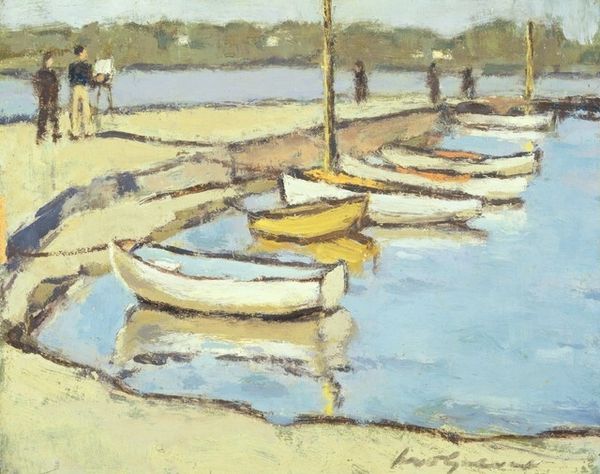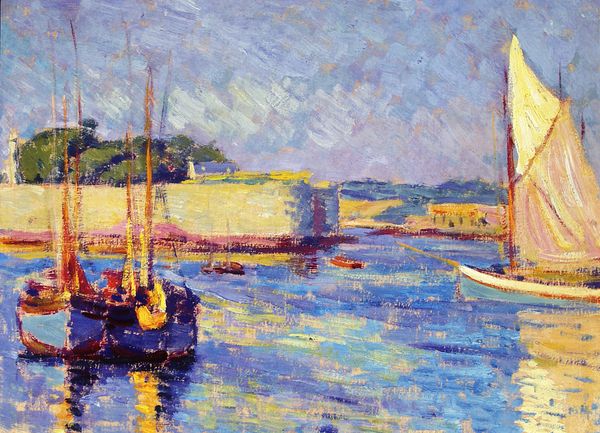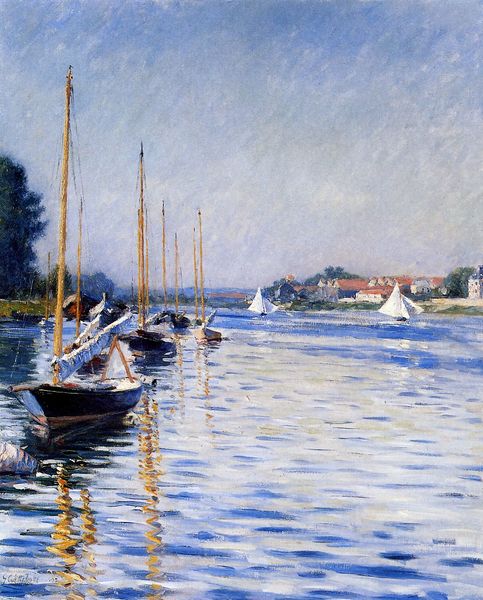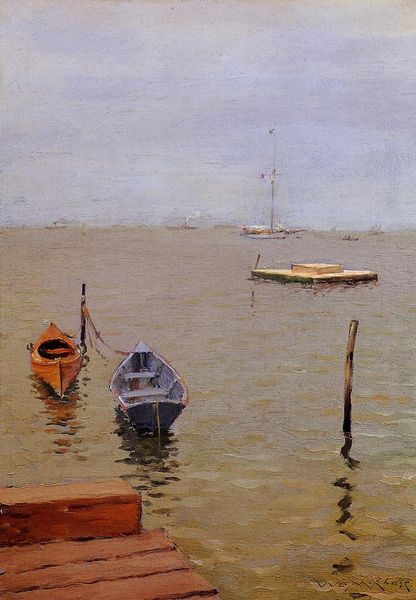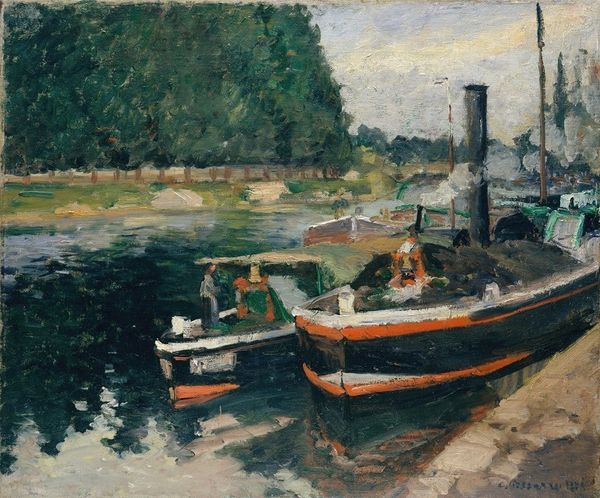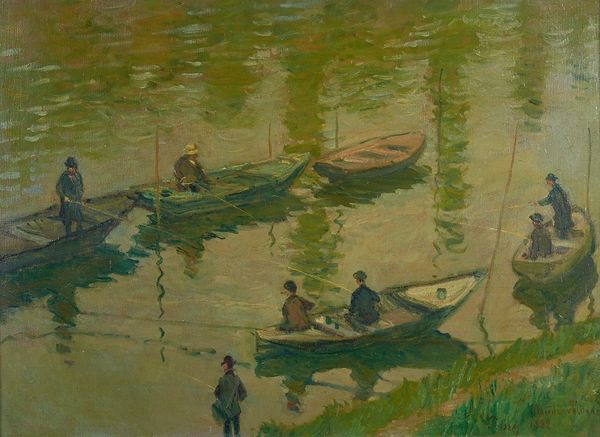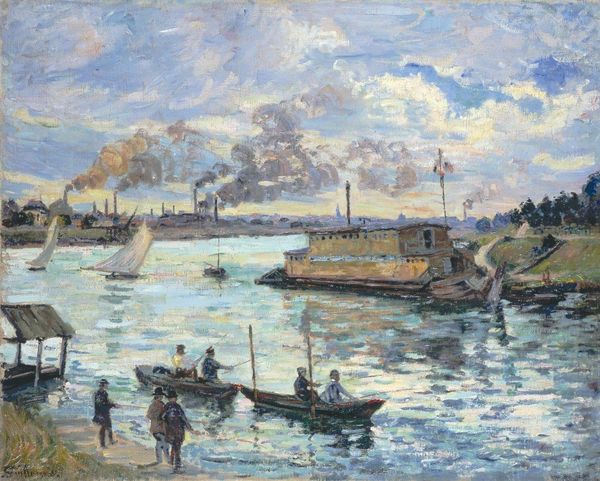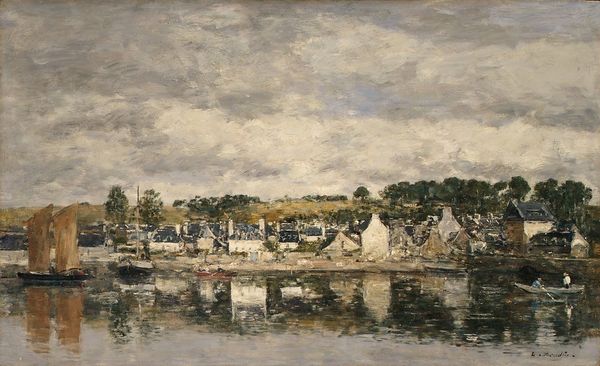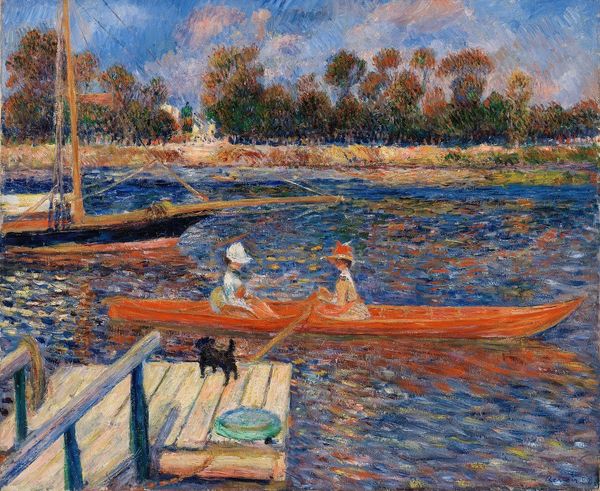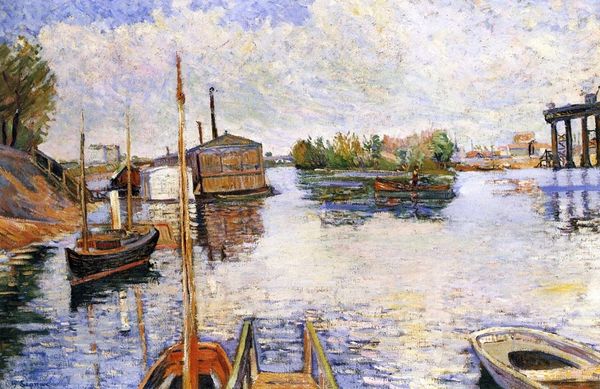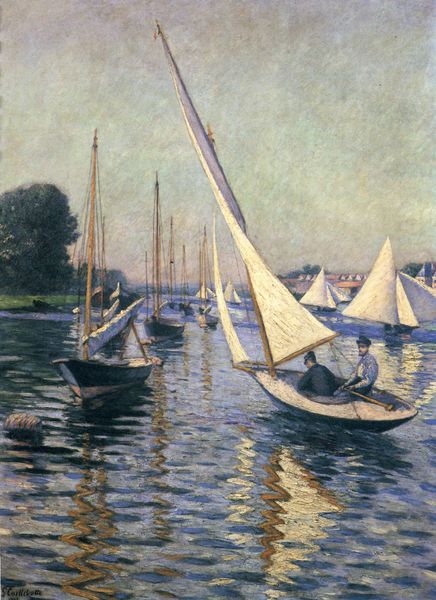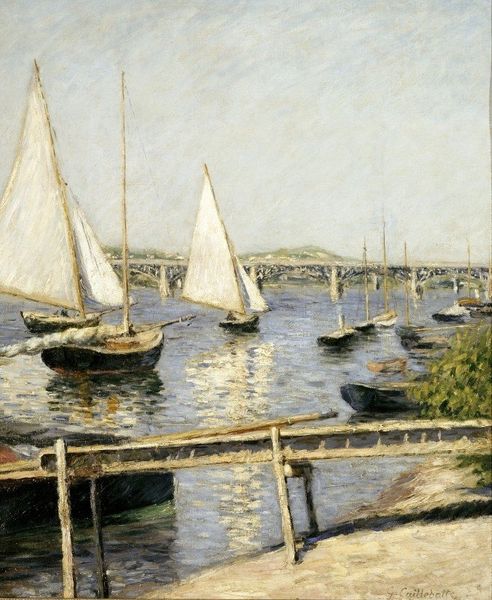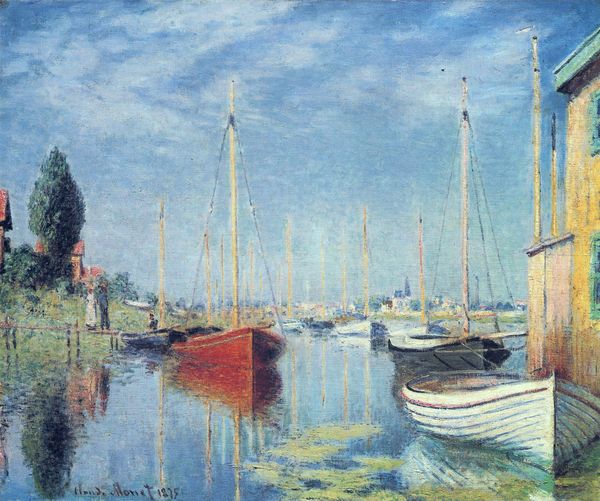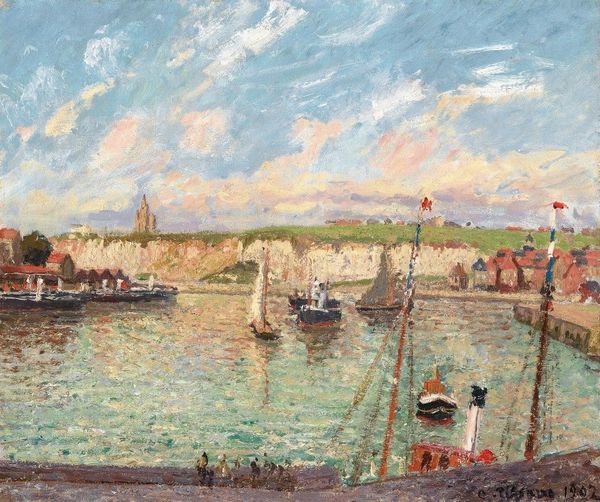
plein-air, oil-paint, impasto
#
impressionism
#
plein-air
#
oil-paint
#
landscape
#
impressionist landscape
#
oil painting
#
impasto
Copyright: Public Domain: Artvee
Editor: So this is "Le bassin d’Argenteuil," painted by Claude Monet in 1874 using oil paints. I'm struck by how the hazy atmosphere softens all the edges and reflects so much light. What symbols or images do you see at play here? Curator: Beyond the obvious, water traditionally represents the unconscious and reflection, and the boats are not merely boats, but vessels traversing life’s journey. This particular basin, Argenteuil, was a burgeoning site for leisure sailing during the late 19th century. What does that conjure for you? Editor: I guess I see the sailboats less as a literal activity, and more as emblems of progress and modernity – the democratization of leisure, almost. Curator: Precisely. Notice how the light fractures across the water’s surface. Light, here, isn't just illumination. In the context of Impressionism, light becomes the subject itself, a symbol of ephemeral experience. How might that tie into the societal shifts of the time? Editor: The rise of industry maybe? And rapid changes making the world seem fleeting? Like, nothing stays the same for very long. Curator: Think about that fleeting aspect within the context of visual memory. Do these captured moments replace a collective memory or add something new to our collective psyche? Does the work invite contemplation or merely offer visual delight? Editor: I’d say it is doing both. Thanks! Now I'm thinking about the layers of meaning behind what seemed like a simple snapshot. Curator: Absolutely! Looking beyond the immediate, visual delights enriches our understanding of the painting as cultural commentary.
Comments
No comments
Be the first to comment and join the conversation on the ultimate creative platform.
